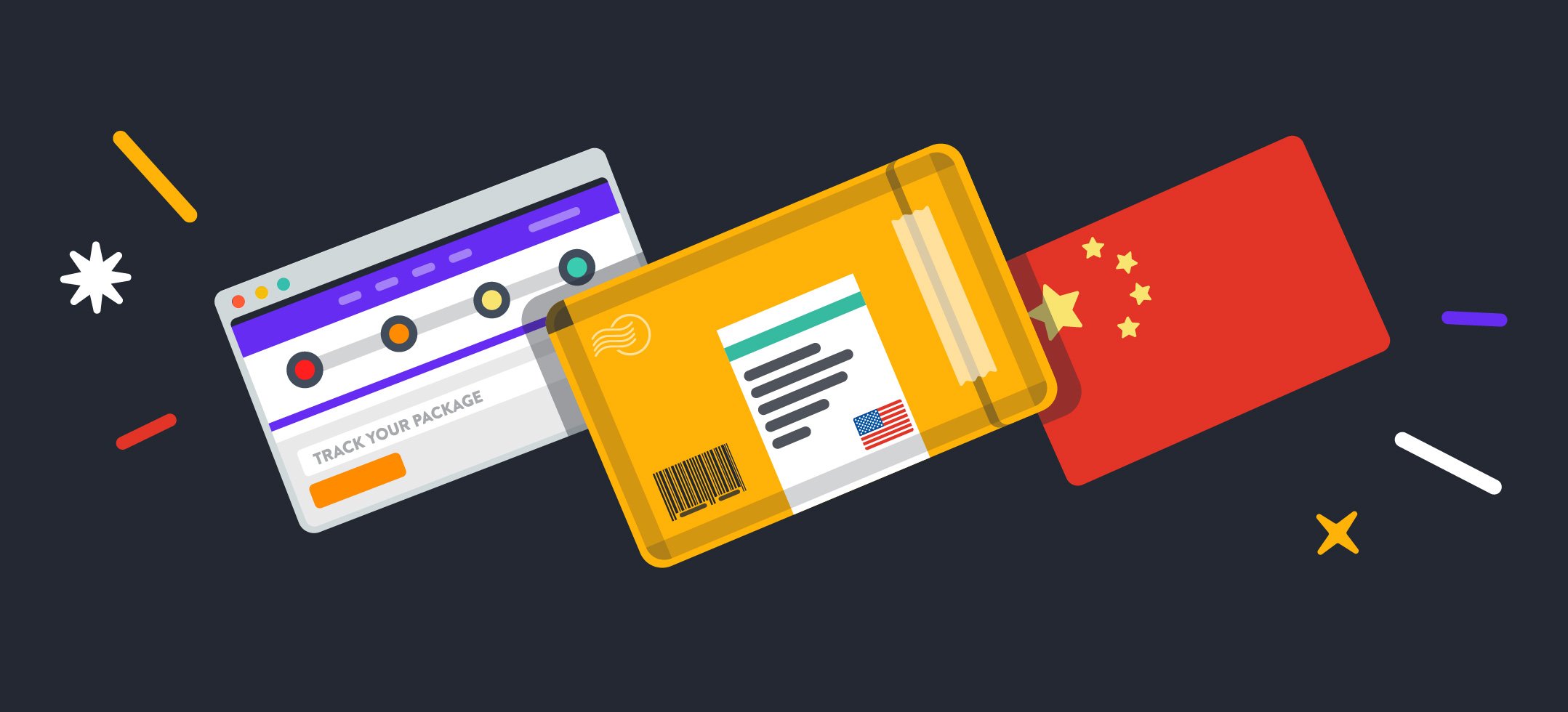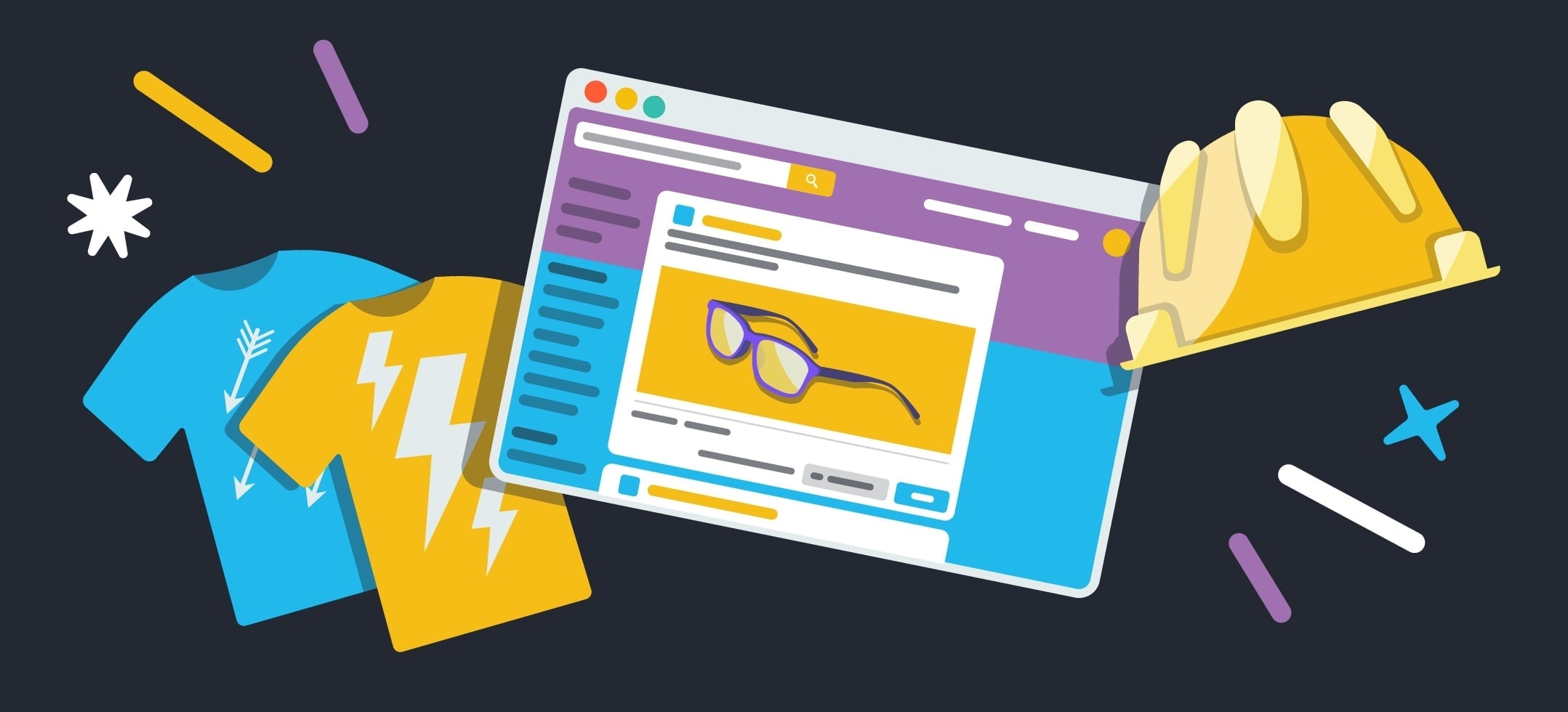
Product Validation for Ecommerce: How to Validate Your Product Idea
Think you have a good product idea? You won’t know for sure until you test it against these product validation methods. Don’t start investing too much time or money into your product idea until you determine whether it’s viable or not and the only way to know for sure is to actually validate it. These 15 methods will help you understand whether you have a market of consumers to sell to, where that market exists, and whether they’ll actually be interested in purchasing your product idea.
Don’t assume that your product idea is something consumers will purchase, know for sure. Let’s jump into the 15 product validation methods every entrepreneur needs to run their product ideas through.
How to Validate Your Product Idea
Product Validation Method #1: Research Keyword Volume

One of the first and very foundational steps you can take to determine whether there’s a viable market to sell your products to is to research the keyword volume. Keyword volume is a data point that represents how many people search for your particular keyword per month, which gives you an indication of how in-demand your product idea might actually be.
To search for keyword volume you’ll need a keyword analytics tool. Our preference is KWFinder — we discuss the reasons why it’s our favorite in our KWFinder Review — but there are many different keyword tools out there.
The first step in using keyword volume research to validate your product idea is to create a list of keywords or phrases your audience might use to search for your product. These keywords or phrases can be as simple as the product name, or as complex as to include the product specs.
For example, if you’re selling a backpack your keywords could simply be “backpack,” or “bookbag.” You could also get more specific by including key phrases like “backpacks for professionals,” and “leather backpacks with zippers.” The latter two key phrases hone in more closely on the niche that your backpack products might cater to, thus helping you understand how much demand there might be for the exact kind of products you plan to sell and the niche you plan to cater to.
Once you have a list of keywords to start with, input them one-by-one into your chosen keyword analytics tool — which in our case is KWFinder. The tool uses data and algorithms to understand the monthly search volume for keywords and phrases so you can understand what the demand or interest level is.
You might think that there’s lots of demand for your product idea, but the keyword analytics tool you use might prove otherwise. On the other hand, you might not think that there are many people searching for your product idea but you may be proven wrong in that case, too. That’s why it’s so important to use a keyword analytics tool to actually research keyword volume: You don’t actually know what the keyword volume is until you look into it and keyword tools provide the cold-hard facts as opposed to just thoughts or opinions.
It is worth noting, however, that keyword analytics tools don’t always get it right. The keyword volume data they generate is a good indicator of what the true search volume is, however, there is potential for error as it’s not an exact science. Keep this in mind as you’re reviewing keyword search volumes and don’t take the results as finite but rather as a relative indicator of all the other keyword data that you research.
Once you use the keyword analytics tool to research your relevant keywords, then you’ll have a good idea of what the demand is for your product idea. Depending on the keywords you use, it likely won’t be an exact representation of how many people are looking to actually purchase the product every month, but just a general overview of the interest in the product idea itself. It can give you a ballpark figure to consider so you can begin to understand the size of your market.
Product Validation Method #2: Order & Sell Samples

Want to know if your product will sell? Then start selling! Sometimes it really is just as easy as that. Depending on your type of product and even your risk tolerance, ordering some samples to start selling to customers might be the right way to start off.
We recommend starting small if you try this step out — don’t get too carried away and definitely don’t order more samples than you’d be okay storing in your basement or garage if you can’t actually sell any of it. You don’t want thousands in unsold inventory units sitting around because there actually was no interest in your product so please, just start small.
While many entrepreneurs start off selling physical products, digital products are also a very appealing alternative and one that would be a great contender for this product validation method. Digital products can be sold like samples as “beta” products — where the user understands that the product is in development and, therefore, knows that bugs, inconsistencies, and errors are inevitable — and offering a sample version of the product can give you an indication of what kind of interest there is in the product. In the case of offering a beta version of a digital product, you’ll also be able to get user’s feedback which can help you better the final product.
If you chose to undertake this product validation method, you’ll have to hustle to get people to purchase your sample products. You’re really going to have to hone in on your target market and find those core customers in your audience that are really interested in what you do and would be willing to support you from the ground up. Finding these kinds of customers really can pay off in the long run though, so this might be a perfect product validation method for you to start off with.
Product Validation Method #3: Launch a Crowdfunding Campaign

This is one of the most surefire ways to validate your product idea but it also takes lots of work and effort to pull off. This product validation method is not for the faint of heart and really should only be conducted by entrepreneurs and merchants who know they can fulfill their promises should their crowdfunding campaign be successful.
As much work and effort as it does take to pull off a successful crowdfunding campaign, it can also be hugely rewarding. It’s a great way to get your brand name out there and help customers in your target market discover you but you have to do it right to reap the rewards long term.
We highly recommend thoroughly planning your crowdfunding campaign in advance if you choose this product validation market so you have the best chance at success. You’ll only be able to gauge the true interest in your products if your campaign does them justice, so make sure you refine your campaign so it speaks to your core customers and gets them excited about your brand.
Try launching your crowdfunding campaign on Kickstarter or Indiegogo, and definitely take the time to look through their listings to understand why some campaigns are successful and why some aren’t so you can apply those learnings to your own campaign.
Product Validation Method #4: Build a Landing Page

Let your customers come to you with a well-optimized landing page. Landing pages are great because they can be as simple or complex as you want them to be and yet both options can help you find and connect with your market effectively.
This option is usually a much slower method to validate product ideas as it often takes a lot of time to drive a substantial audience to your landing page. As you build up your audience, however, you’ll be able to interact with them and help them get to know your brand and what your plans are for product development in the future which can help you build lifelong customer relationships.
By building a landing page, you’re creating a space online where people looking for your product idea can congregate to discuss, interact, and connect with you or other consumers interested in your product idea. This way, you can begin to develop a community around your product idea which will give you insight into what people are and are not interested in, in terms of your product idea. You can use your landing page to gauge interest, ask for advice, connect online, connect offline, and share your business plans as it develops.
To successfully interact with the audience you build through your landing page you’re likely going to want to include an email capture on the landing page itself so interested people can sign up to your email list. This way you’ll be able to communicate with them more effectively and you’ll also build a growing list of people interested in your product idea. Consider also listing your business’ social media handles so your audience can connect with you there, too
To launch a landing page for this product validation method, we recommend getting started with Carrd as it’s very easy and inexpensive yet they offer sophisticated features that make them one of the top landing page providers on the market. Check out our Carrd Review to learn more.
Product Validation Method #5: Offer Pre-Orders

This is a great product validation method because not only will you be able to gauge interest in your product idea but you’ll also gather the funds up front so you can begin manufacturing or shipping out products without having to fund the entire process out of your own pocket. It’s like a way to crowdfund on your own without actually using a crowdfunding platform.
This is a great way to validate your product idea if you do already have some product ready to sell or if you can quickly and easily have inventory ready to ship to customers soon after pre-orders start coming in. Your customers won’t want to wait too long for their products to arrive, so you have to at least be ready to start manufacturing your products soon once you get to the pre-order stage.
Most hosted ecommerce platforms like Shopify or BigCommerce should offer pre-order options so you can execute this product validation method with ease, so check to see what your ecommerce platform provider can offer you.
Product Validation Method #6: Check Google Trends

Part of your product validation process should be to run your product idea through a tool like Google Trends to understand the market forecast and seasonality swings for your product idea.
This will give you some insight into whether your product idea is part of a growing market or whether it’s maybe a trend item so you can understand the longevity of consumer interest. When you enter your product keywords — which you should still have from the above keyword research product validation step — into Google Trends, it will generate a graph that represents the keyword volume data over time which will give you an indication as to when and how often your particular keyword has been searched throughout the years.
Take into consideration the rise and fall of the graph and notice whether any patterns occur as this may indicate rising and falling interest in your product as seasons change or look for growing or diminishing interest in your product idea over time which demonstrates a growing, steading or declining market.
This step in the product validation process will give you an idea of what kind of interest you can expect from consumers in regards to your product idea and can even help give you a glimpse into the future.
Product Validation Method #7: Determine Geographic Relevance

Find out if there’s demand for your product idea locally, or in a specific geographic location, by determining your product’s geographic relevance. This is a particularly useful product validation method if you have a product idea that’s already being sold in another part of the world and you’re looking to bring it to your part of the world or if you just want to know if there’s any demand for it locally. Many brands become successful by becoming a main player in their local area, so don’t discount the value in that even if you’re starting an online business that can essentially sell to any location.
To gauge the geographic relevance of your product idea, you’ll want to use tools like KWFinder to search for keyword volume and Google Trends to search for keyword fluctuation over time, but make sure that you restrict the location settings to the area you’re looking to focus in on.
By using these tools to get hyper-specific to your geographic area, you might be surprised at the results! It’s possible that the keywords you search for might indicate that your product is in high demand if you search without narrowing down the location settings but once you do actually narrow down the location settings to the area you mainly intend to cater to, you might find out that there’s actually less search volume in that area than you may have expected.
This is useful to know before you go ahead start investing in your product. If there is a low search volume for your particular product idea in the area that you would have hoped to establish your brand, don’t be completely discouraged; just understand that you’ll likely have to cater to a wider geographic area than you may have otherwise intended in order to be successful long term or you may have to work harder to establish a market for your product in your desired location.
Product Validation Method #8: Observe Social Chatter

There is so much learn from consumers through social media channels so take the time to comb through comments and posts to understand what consumers are saying about your product idea. This is known as “social chatter” and may take some serious digging to unearth.
To use this method to validate your product idea, you’re going to have to sleuth around social media platforms like Facebook, Instagram, Twitter and maybe even Pinterest and get involved in the comments section. Look for posts or hashtags related to your product or product keywords and see what is being said about the product, and really observe the kind of language that consumers are using in their discussions. There’s a lot that can be learned in these places and since it’s coming straight from the consumers’ mouths — often in an unfiltered and even anonymous way — you’ll get unbiased opinions straight from your target market.
Just to clarify: You don’t actually need to post anything about your own specific product or product idea, just go searching for posts or hashtags that are similar to your product idea to see what comes up. You’ll likely be able to find social media posts about your product idea itself or something similar, and by going to the comments section you’ll learn what consumers have to say. It’s all about keeping your eyes and ears open, so don’t be afraid to really dive deep on multiple different social platforms.
Keep your ear to the ground on each social platform with these tips:
- Facebook: Search for groups relating to your keyword, or find groups where your niche market congregates and follow along with discussions there to see if anything relating to your product comes up. Also, search by hashtag to see if you can find relevant posts about your product idea.
- Instagram: Search by keyword or hashtag to find posts that relate to your keyword and scroll through the comments to observe the discussion. Also, find influencers in your niche to see if they feature or review products like yours and also to see how their followers respond in the comments section.
- Twitter: Use Twitter Advanced Search to find posts that contain the exact keywords or phrases you’re looking for and even to find posts written in different languages (which will be particularly useful for you if location is important).
Product Validation Method #9: Conduct Competitor Research

No matter what kind of product you want to sell, you’re going to have competitors. Even if you think you don’t have competitors, you do, and you just haven’t looked hard enough to find them yet. Having competition is good though, it means that there’s a market to sell to and customers that are willing to purchase your kind of product which is ultimately what you’re after, right?
Conduct research on your competitors to determine whether you have a viable product idea or not by understanding what they sell, who they sell to, and how they’re selling it. Sign up to your competitors’ email lists, scour through their websites, trawl through their social media accounts, and be active at every touchpoint they have available. You want to hone in on what’s working for them so you can replicate it for your own business but you also want to find their areas of weakness or the areas they’ve left underdeveloped so you can swoop in and satisfy that need in the market instead.
Check out these resources to research your competition:
- SEMrush: Find the keywords your competition are ranking for. Check out our SEMrush Review for a full overview of the tool.
- Google Alerts: Stay notified about your competition and when they’re mentioned online.
- KWFinder: Find the websites that are ranking for your product keywords to see why and how they’re the top search result.
- Alexa Similar Sites: Find your competition by using a similar site search.
Product Validation Method #10: Open a Test Store

To really validate your product idea, take it into the real world by opening up a test store. Much like some restaurants start out as food trucks or boutiques start out by having a stall at a local market, validating the demand for your product idea is possible when you set up shop where your customers can find you.
This doesn’t mean that you have to sell your products in-person — although, you could if you think that would be the best way to access your potential customer base — but you can also open a test store or an online pop-up shop online! Much like in-person pop-up stores, your online pop-up store could run for only a few days just to get a sense of whether there’s any kind of demand for the product without putting too much into it in terms of resources. Bear in mind, however, that it usually does take some time and effort to drive traffic to a new website so you may want to do some advertising or promotion of your test store while it’s open to drive traffic to it.
As an alternative, you could also open a test store by selling your product on online marketplaces that your core customers shop at, again, just to get a sense of what the demand would be like for your product. Selling on marketplaces is also advantageous because you don’t have to do the work to bring the traffic there, whereas if you were to open your own test store online you’ll have to put in some effort to drive traffic to your store.
If you decide to open up a test store in-person, make sure that you’re going to be where your customers are whether that’s at festivals, markets, gatherings or local places that feature goods from local sellers. You have to make it a priority to sell where your target market hangs out to get a true indication of what the demand for your products is like.
Product Validation Method #11: Review Case Studies

Case studies can be an invaluable resource when you’re first starting your ecommerce business, and many founders share their own experience with product validation when they’re featured in case studies.
Search online for case studies related to the industry you want to launch in or, if you can, find case studies specific to the exact product you want to launch. Alternatively, just check out as many case studies as you can find where the founder discusses their product validation process as you may be able to apply their methods to your own process.
You can also use case studies as a way to gauge whether product ideas like yours are possible to build a successful business around. Businesses that are featured in case studies are usually businesses that others want to emulate so if there’s a case study about a business that sells a product like you want to sell, then it’s likely a viable option.
Check out our Ecommerce Case Study section to get started and then head over to Built With Shopify to learn more about Shopify-specific ecommerce case studies.
Product Validation Method #12: Consult Forums

Online forums can be a wealth of knowledge when it comes to validating your product idea. A forum like Reddit is one of the best places to get started since it’s a huge online hub where people gather and users even self-segment themselves based on their interests into “subreddits” which can be great for you if you’re looking to find a particular niche market to hone in on.
Find the Reddit subreddits that are most relevant to your product idea and either ask the users there outright if your product idea is something they’d be interested in (but first, check the Reddiquette to see if you’re actually allowed to ask questions like that in the subreddit — Reddit users are notorious for enforcing their strict no-spam rules) or find product-related subreddits to ask other entrepreneurs and merchants there if your product idea has any potential pitfalls.
Product Validation Method #13: Run Ads

If you have a few products you can sell, try running a small set of ads to see how they perform. This is likely something you could start testing out with Facebook Ads to promote your product on both Facebook and Instagram and the results could give you an indication of what kind of demand there is out there for your product and even where that demand might be coming from.
Make sure that your ad is compelling so that you have the greatest possible chance to entice users to click on it, and you might even want to try A/B testing your ads to see if some campaigns perform better than others.
Facebook Ads can be tricky to get right so don’t work on executing a completely perfect ad campaign, just run something simple yet realistic so you can gauge consumer reactions to see if your product idea is something your audience would actually be interested in purchasing.
Product Validation Method #14: Build an Audience

Want to know if there’s an audience of people that will buy your product? Start building that audience! This is something you can do on your own with minimal experience and financial input, however, growing an audience takes quite a bit of time and consistency. It’s a marathon, not a sprint, so if you’ve got time to commit to this then this could be a rewarding option in the long term.
Use social media channels like Facebook, Instagram, Twitter, Pinterest, Twitch or any other type of social channel in your niche to build brand awareness and find the audience that would be interested in learning more about your product idea or ultimately, purchasing it. Start building your social accounts and see if customers bite! If you’re able to grow an audience around your product and brand then you might just be on to something.
Product Validation Method #15: Consult Influencers

Influencers have their finger on the pulse of the industry that they work within which usually means they have a good understanding of what already exists on the market in terms of product options and what kind of products consumers want more of. They’re in a unique position of being close to both brands and consumers so they can relay information from one side to the next which might be exactly the kind of intel you need when it comes to validating your product idea.
Reach out to influencers (and don’t neglect micro-influencers!) in your niche and pick their brain to see what they think about your product idea and whether it’s a good fit for the market, if it fills a need, and if they think consumers will be interested in it. Remember that influencers typically will just have their own opinion to offer and not necessarily cold, hard facts but they might have great insights to bring to your attention.
Influencers can be hard to get ahold of since they’re normally communicating with so many different people — brands and consumers included — so reach out to a bunch and see what kind of responses you get back. Remember to be polite — after all, you’re the one who needs a favor from them — and keep reaching out to them until you get a good grasp on what they think the landscape for your product idea is.
Conclusion
Try out these product validation methods for yourself before you get too deep in your product idea. You might be surprised at the results these tactics bring up! That’s why it’s so important to validate your product idea before you invest too heavily in it — you don’t know what the market demand for your product idea is until you actually research into it.
Keep in mind that while it’s highly recommended to vet your product idea using these methods, you can research analytics and review statistics all you want but you still might need to define the market for yourself and start building it out if it doesn’t exist already. In this case, you’re just going to have to start selling and assume the risk that your product idea may or may not work out and be okay with that. See how far these product validation methods take you first and then work from there.



